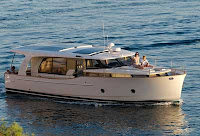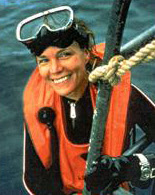Seven of the 19 Houses Built by Student Competitors Produced More Energy Than They Consumed Under Mostly Cloudy Skies

WASHINGTON, DC – The U.S. Department of Energy Solar Decathlon 2011 concluded this weekend on the National Mall’s West Potomac Park in Washington, D.C. Approximately 4,000 collegiate students from five countries on four continents invested countless hours of time and tireless effort to participate in this prestigious, clean energy competition. In spite of the cloudy and rainy weather during a majority of the contest days, seven out of the 19 highly energy efficient solar-powered houses designed by the student competitors still produced more energy than they consumed. Additionally, student team members led more than 357,000 tours to share the energy-saving features of their houses with the public. In the end, the University of Maryland was crowned the overall winner. At Saturday evening’s Victory Reception, Appalachian State University won the People’s Choice Award for the public’s favorite Solar Decathlon house, a poll in which more than 92,000 votes were cast by visitors, fans and consumers.
The Solar Decathlon is an award-winning competition that challenges collegiate teams from around the world to design, build, and operate solar-powered houses that are affordable, highly energy efficient, attractive, and easy to live in. The 2011 teams and their houses represented a broad range of design solutions, geographic locations and climates, and were targeted toward urban, suburban and rural settings. The houses were intended for different housing markets, including lower-income, disaster relief, retirement, and single family.
“The Solar Decathlon’s impact is threefold,” said Richard King, director of the Solar Decathlon for the U.S. Department of Energy. “Over the last two years, the student competitors have received unique training that prepares them to enter our nation’s clean energy workforce. Visitors and consumers learned firsthand that affordable, energy-efficient features in these innovative houses can help them save money today. And this year’s competition houses will become teaching tools for industry professionals and students around the world.”
The winner of the competition is the team that best blends affordability, consumer appeal, and design excellence with optimal energy production and maximum efficiency. The top three overall finishers of the Solar Decathlon 2011 were the University of Maryland, Purdue University, and New Zealand (Victoria University of Wellington). The complete list of final results and team scores may be found below and on www.SolarDecathlon.gov.
Teams have begun to disassemble their houses and will depart Washington, D.C. later this week. Over the coming months, the houses will travel across the country and the globe on educational tours and to their final destinations. Some of the houses are sold to recover costs or raise money for future teams. Many of the houses are used for continued research and are on display for public tours at their respective universities.
Statistics from the U.S. Department of Energy Solar Decathlon 2011:
• Even though a majority of the competition days were cloudy, seven out of the 19 houses produced more energy than they consumed
• 357,000 house visits were provided to the public during 10 days
• 92,000 votes were cast for the People’s Choice Award, more than five times the number of votes cast during the previous competition
• A new Affordability Contest was featured, demonstrating the reasonable cost of many energy-saving home improvement products and design solutions available today
• Approximately 4,000 collegiate students earned valuable experience by building an energy efficient house with peers in other disciplines, helping them prepare to enter the clean energy workforce
• Collegiate teams from five countries and four continents participated
This year’s university-led teams were chosen nearly two years ago through a competitive process. The application process for the sixth Solar Decathlon, to be held in fall 2013, has already begun with applications available online for student teams at www.SolarDecathlon.gov/apply.html.
For full event information and high-resolution photos and videos, visit www.SolarDecathlon.gov. To view final scores and standings for the overall competition and individual contests, see below or visit www.SolarDecathlon.gov/scores.html. B-roll footage of individual teams, houses and the overall competition is available for download copyright-free at http://apps1.eere.energy.gov/news/b_roll_sd.cfm#sd11. You also may join the conversation on Facebook at Facebook.com/DOESolarDecathlon and Twitter
at@Solar_Decathlon.
Solar Decathlon 2011 teams that competed on the National Mall’s West Potomac Park:
• Appalachian State University
• Canada (University of Calgary)
• Florida International University
• University of Illinois at Urbana-Champaign
• University of Maryland
• Middlebury College
• New Zealand (Victoria University of Wellington)
• The Ohio State University
• Parsons NS Stevens (Parsons The New School for Design and Stevens Institute of Technology, a team that also includes Milano School of International Affairs, Management and Urban Policy at The New School)
• Purdue University
• The Southern California Institute of Architecture and California Institute of Technology
• Team Belgium (Ghent University)
• Team China (Tongji University)
• Team Florida (The University of South Florida, Florida State University, the University of Central Florida, and the University of Florida)
• Team Massachusetts (Massachusetts College of Art and Design and University of Massachusetts at Lowell)
• Team New Jersey (Rutgers – The State University of New Jersey and New Jersey Institute of Technology)
• Team New York (The City College of New York)
• The University of Tennessee
• Tidewater Virginia (Old Dominion University and Hampton University
Solar Decathlon 2011 Final Scores and Standings
1. Maryland 951.151
2. Purdue 931.390
3. New Zealand 919.058
4. Middlebury College 914.809
5. Ohio State 903.938
6. SCI-Arc/Caltech 899.490
7. Illinois 875.715
8. Tennessee 859.132
9. Team Massachusetts 856.351
10. Canada 836.423
11. Florida Int'l 833.159
12. Appalachian State 832.499
13. Parsons NS Stevens 828.816
14. Tidewater Virginia 774.910
15. Team China 765.471
16. Team Belgium 709.843
17. Team New York 677.356
18. Team New Jersey 669.352
19. Team Florida 619.006
Solar Decathlon 2011 Individual Contest Winners
Affordability (Awarded Tuesday, September 27, 2011)
Parsons NS Stevens and Team Belgium tied for first and earned the full 100 points in the contest by constructing houses estimated to cost $229,890 and $249,568, respectively. New for the Solar Decathlon 2011, the Affordability contest encouraged teams to design and build affordable houses that combine energy efficient construction and appliances with renewable energy systems. A professional estimator determined the
construction cost of each house. Teams earned 100 points for achieving a target construction cost of $250,000 or less. A sliding point scale was applied to houses with estimated construction costs between $250,001 and $600,000.
Appliances (Awarded Saturday, October 1, 2011)
The University of Illinois took first place and earned 99.955 out of 100 possible points by outperforming the other 18 houses in keeping its refrigerator and freezer cold, washing and drying loads of laundry during the contest week, and running a dishwasher during the competition. The Appliances Contest is designed to mimic the appliance use of an average U.S. house.
Architecture (Awarded Wednesday, September 28, 2011)
Maryland took first place in the Architecture Contest and earned 96 points out of a possible 100. A jury of architects judged homes on the aesthetic and functional elements of the home’s design; integration and energy
efficiency of electrical and natural light; inspiration and delight to Solar Decathlon visitors; and documentation including drawings, a project manual, and an audiovisual architecture presentation that accurately reflect the constructed project on the competition site.
Comfort Zone (Awarded Saturday, October 1, 2011)
Ohio State University topped the contestants in the Comfort Zone Contest, with 98.652 out of 100 points for maintaining indoor temperatures between 71 and 76 degrees Fahrenheit and relative humidity below 60 percent.
Communications (Awarded Friday, September 30, 2011)
Middlebury College’s communications efforts, including communications plans, student-led tours, and team
website, were judged by a jury of website and public relations experts, and won the contest with a score of 90 points out of a possible 100 points.
Engineering (Awarded Thursday, September 29, 2011)
New Zealand won the Engineering contest, which was evaluated by a group of prominent engineers, who
determined which solar home best exemplified excellence in functionality, efficiency, innovation, reliability and documentation of its energy systems. New Zealand scored 93 out of a possible 100 points.
Home Entertainment (Awarded Saturday, October 1, 2011)
Middlebury College earned 98.560 out of a possible 100 points in this contest, which required students to use electricity generated by their solar houses to run interior and exterior lights, a TV, a computer, and a kitchen appliance to boil water. Teams were also required to hold two dinner parties and a movie night for neighbors.
Hot Water (Awarded Saturday, October 1, 2011)
Seven teams tied for first and earned the full 100 points in the Hot Water contest’s “shower tests,” which aimed to deliver 15 gallons of hot water in ten minutes or less. Of course, the water was heated by the sun. Tying for top honors in this contest were: Appalachian State, Maryland, New Zealand, Ohio State, Parsons NS Stevens, SCI-Arc/Caltech, and Tennessee.
Energy Balance (Awarded Saturday, October 1, 2011)
Seven teams tied for first and earned the full 100 points in the Energy Balance contest. Teams earned points for producing at least as much energy as their houses needed during the contest week. The teams accomplished this by balancing production and consumption. Tying for top honors in this contest were: Florida International, Illinois, Maryland, New Zealand, Purdue, SCI-Arc/Caltech, and Tennessee.
Market Appeal (Awarded Saturday, October 1, 2011)
Middlebury College won the Market Appeal contest, which evaluated whether the cost-effective construction and solar technology in a team’s design would create a viable product on the open market. Judges gauged market appeal based on three criteria: livability, marketability and constructability. Middlebury earned 95 points out of a possible 100 as judged by the professional jury.
More about the Solar Decathlon
The U.S. Department of Energy Solar Decathlon 2011 is an award-winning program that challenges collegiate students from around the world to design, build and operate solar-powered houses that are affordable, highly energy efficient, attractive, and easy to live in. The competition shows consumers how to save money and energy with affordable clean energy products that are available today. The nearly two-year projects culminated in an unprecedented display of affordable green living and design on the National Mall’s West Potomac Park from September 23 – October 2, 2011. The Solar Decathlon also provides participating students with hands-on experience and unique training that prepares them to enter our nation’s clean energy workforce, supporting the Obama Administration’s goal of transitioning to a clean energy economy while saving families and businesses money.














